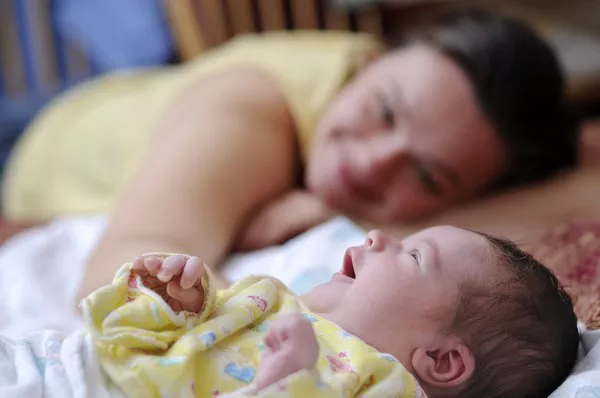As a new parent, deciphering your newborn’s emotions can be both exciting and challenging. While your baby may not be able to express their feelings in words, they are capable of experiencing happiness right from the early days of life. Recognizing the signs and indicators of your newborn’s happiness is not only fulfilling but also vital for fostering their emotional well-being. In this comprehensive guide, we will explore a range of cues and behaviors that can help you gauge your baby’s happiness, allowing you to nurture their emotional growth and strengthen the parent-child bond.
-
Facial Expressions:
Facial expressions serve as a window into your newborn’s emotions. Beyond their first reflexive smiles, around six to eight weeks of age, you’ll begin to witness genuine smiles, known as “social smiles.” These smiles occur when your baby is engaged with you or experiences joy. Observe their facial features for a relaxed and content expression, which is an unmistakable sign of happiness. Additionally, notice the subtle changes in their eyebrows, eyes, and mouth, as they convey a wide range of emotions.
-
Body Language:
Your baby’s body language provides valuable insights into their happiness. When content and at ease, newborns often exhibit a relaxed posture, with their limbs comfortably positioned. Notice if your baby’s hands are open and relaxed, their body is calm, and their movements are fluid. These signs indicate a sense of comfort and happiness in their surroundings.
-
Eye Contact:
Eye contact is a significant communication tool for newborns. When your baby locks eyes with you and maintains sustained eye contact, it reveals their interest, connection, and happiness. The gaze between you and your baby establishes a strong emotional bond, signaling a sense of security and joy in your presence.
-
Vocalizations:
Your newborn’s vocalizations can offer valuable insights into their emotional state. Happy and content babies often coo, babble, and make soft, melodic sounds. These vocalizations serve as a form of communication, indicating their enjoyment and engagement with their environment. Pay attention to the different tones, pitches, and rhythms of their vocalizations, as they reflect their emotional state.
-
Active and Alert Behavior:
When babies are happy, they tend to be more active, alert, and responsive to stimuli. Observe your baby’s engagement with their surroundings, their interest in toys, and their exploratory movements. Happy infants demonstrate a heightened curiosity, responding with excitement and enthusiasm to sensory experiences.
-
Sleep and Feeding Patterns:
A newborn’s overall happiness is closely intertwined with their sleep and feeding patterns. Well-rested and well-nourished babies are generally more content and satisfied. Pay attention to regular sleep patterns, duration, and quality of sleep, as well as healthy feeding routines. Ensuring your baby receives adequate rest and nourishment contributes to their emotional well-being.
-
Soothing and Contentment:
The ability to self-soothe and find contentment is an essential aspect of your baby’s happiness. Observe if your newborn can calm themselves through gentle rocking, sucking on their fingers, or cuddling with a comfort object. Babies who exhibit self-regulation and find comfort independently tend to experience greater contentment and happiness.
-
Interaction and Responsiveness:
Positive interaction and responsiveness form the foundation of your baby’s happiness. Engage with your newborn through play, gentle touch, and talking, and observe their responses. Happy babies often demonstrate reciprocal interactions by smiling, cooing, and imitating your facial expressions. They actively listen by turning their heads toward your voice and displaying an eagerness to communicate.
Conclusion:
Understanding your newborn’s happiness requires attentive observation, sensitivity, and nurturing. By interpreting their facial expressions, body language, eye contact, vocalizations, and overall behavior, you can gain valuable insights into your baby’s emotional well-being. Remember that each baby is unique, and their expressions of happiness may vary. Take the time to bond with your newborn, learn their individual cues, and build a strong parent-child connection.
It is important to note that while recognizing your baby’s happiness is significant, it is equally crucial to address any signs of distress, discomfort, or prolonged periods of unhappiness. Babies communicate their needs through a range of cues, including crying, fussiness, or withdrawal. Responding promptly and sensitively to their needs fosters a sense of security, contributing to their overall happiness and emotional development.


